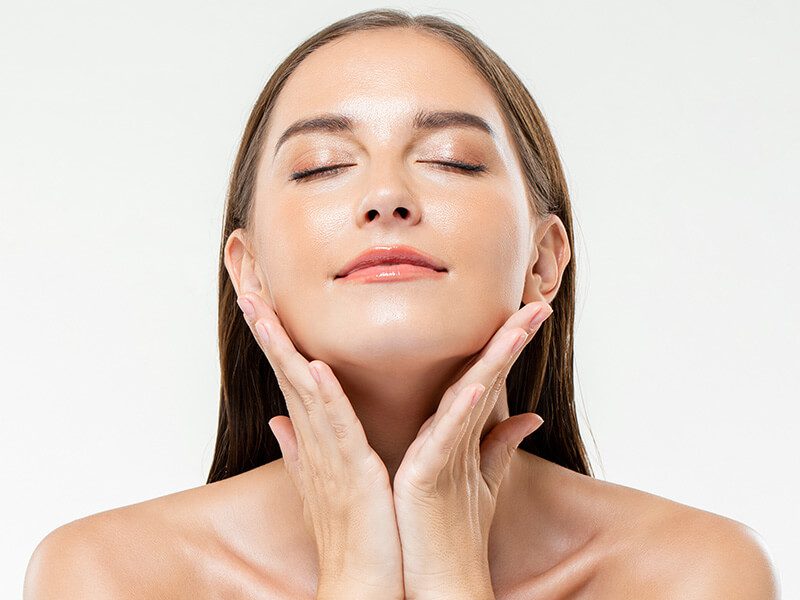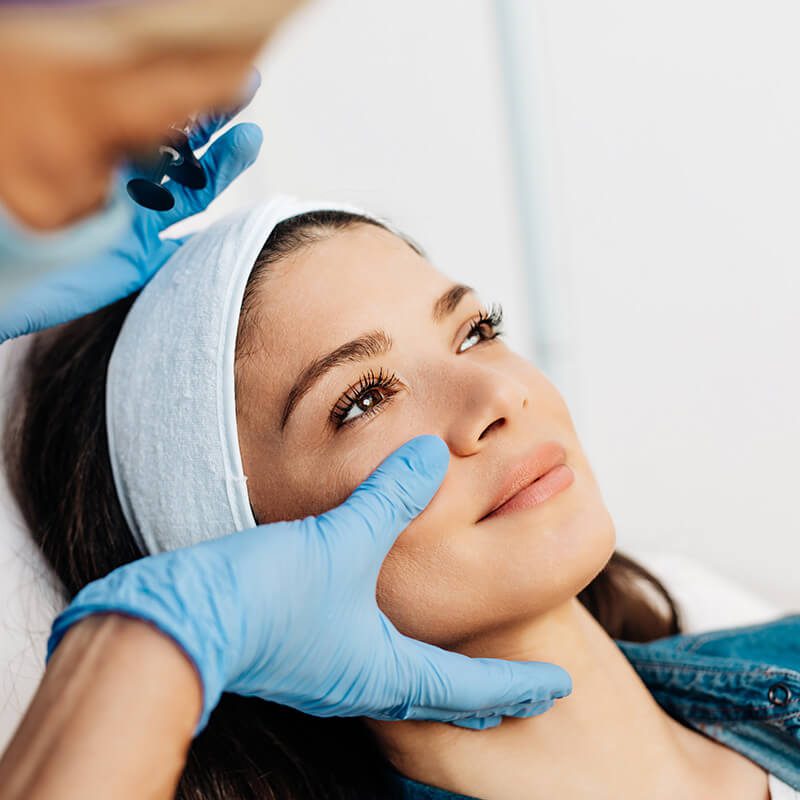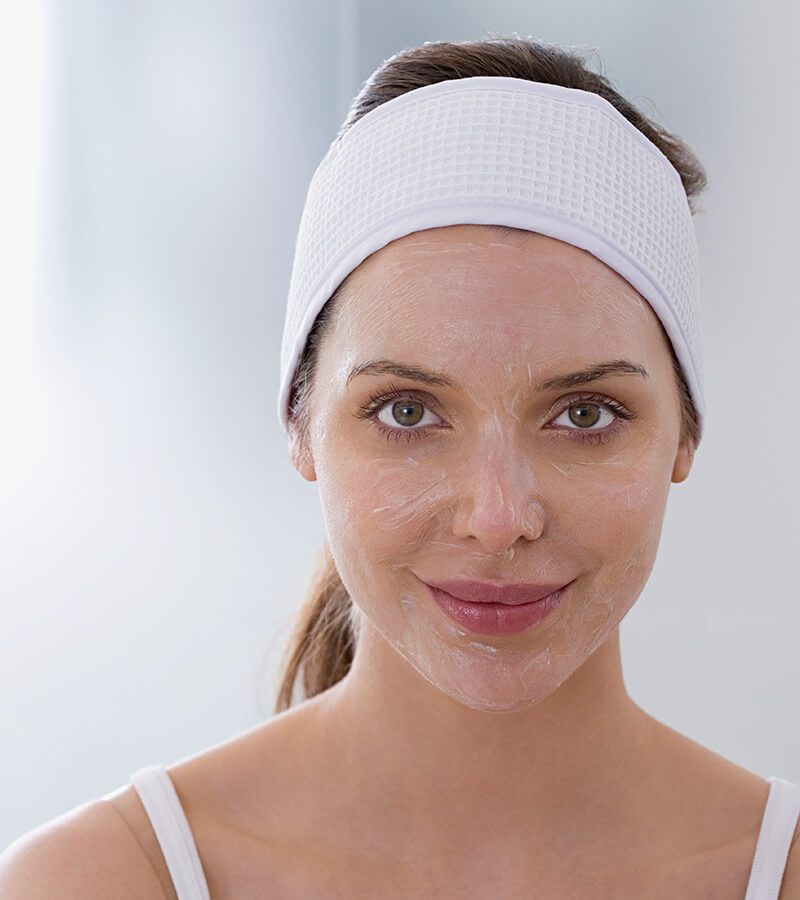
Chemical Peel
Skin peels of varying descriptions have been used for thousands of years.
According to historical accounts, ancient civilizations used masks composed of sour milk or wine residues to improve their appearance. Today, we may not use milk or wine, but chemical peels remain a proven method to help regain the smooth, healthy complexion you desire.
Chemical peels can be used to treat wrinkles, sun spots and facial scarring. However, for deeper scars, laser resurfacing, scar excision, or soft-tissue fillers may be more effective. Peels are most commonly performed on the face and neck, although the chest, hands, arms and legs can also be treated depending on the type of peel that is used.
By varying the amount of chemical applied, you can get different depths of peel while using the same chemical agent. A deep peel results in the regeneration of collagen, the protein that is a major component in the body’s connective tissue. A superficial peel can achieve good results with repeated applications. Talk to your doctor about what peel would work best for you.

About the Procedure
While it may sound like a facial, a “deep” chemical peel is actually a surgical procedure using potent chemicals such as glycolic acid, lactic acid, trichloroacetic acid, phenol croton oil, and resorcinol. An acid solution is applied to the skin, which dissolves the outer layers and regenerates collagen in the underlying skin.
The production of collagen decreases with age and results in skin that is both less resilient and less healthy looking. Sun and ultraviolet rays also play a major role in the decreased collagen production. A chemical peel is a proven method to increase collagen production.
A deep peel may be performed in an outpatient surgery setting. However, because it is difficult to see and care for yourself during the subsequent 48-hour period, nursing care is usually helpful.
A full-face, deep chemical peel requires preoperative medication, usually Valium and an analgesic given intravenously. The intravenous line stays open during the procedure in the event more medication is needed. You will be monitored with an EKG during a deep chemical peel.
The results of a deep peel are long lasting and a repeat peel is not usually necessary.
About Superficial Chemical Peels:
A superficial peel utilizes lower concentrations of peeling agents such as alpha hydroxy acids, salycic acid, trichloroacetic acids, phenol croton oil, retinoids, and vitamin C. A superficial peel addresses only the outer layers of skin and results in a healthy glow that lasts for several weeks. Repeat peels are necessary to maintain results. Superficial peels are usually performed on an outpatient basis and no anesthesia is necessary.

Superficial Peels
Alpha Hydroxy Acids:
Alpha hydroxy acids are naturally occurring acids, derived from the sugars in certain plants and can soften and smooth the skin’s surface. Examples include glycolic acid and mandelic acid, though there are several others.
Glycolic acid is a natural peel derived from the sugarcane plant. It can be effective in renewing skin and removing fine lines. This peel works well for people with olive complexions and for those who want to enjoy a more even-toned skin color. Glycolic acids improve the skin by penetrating the outer layer of skin and reaching the underlying layers. It can dissolve dead skin cells, increase cell turnover, and generally slough off dull, dry skin from the surface.
Another alpha hydroxy acid, mandelic acid, which is derived from bitter almonds, can be particularly helpful in controlling mild to moderate acne. Mandelic acid can help fade melasma, also called the “mask of pregnancy.” The is a type of increased pigmentation affecting the face that appears in up to 75 percent of all pregnancies. This condition is often resistant to other topical treatments such as Retin-A or bleaching creams.
Salicylic Acid:
Salicylic acid is another agent which also peels away dead skin cells. It is one of the ingredients found in many over-the-counter acne creams.
Trichloroacetic Acid:
A trichloracetic acid (TCA) peel is often used to treat wrinkles, pigmentary changes and skin blemishes. For spot peeling of limited areas, such as around the mouth, TCA formulas are often preferred because they have less bleaching effect than other agents. It can also be effective in treating people with darker skin.
Phenol croton oil Acid:
A phenol croton oil peel is sometimes recommended for treating particularly rough and sun-damaged facial skin. It is effective in reducing the appearance of wrinkles ranging from fine lines to deeper creases. It can correct pigmentary problems including blotchiness or age-related brown spots.
Phenol croton oil is particularly useful for minimizing the vertical lines that often form around the mouth as a result of aging. It is an agent that is used for a deep peel.
Retinoids:
Retinoids are derived from Vitamin A. They can be applied to the face, neck, chest, back of hands and arms.
Topical retinoids are effective treatments for mild to moderately severe acne. In recent years, it has also been shown to reverse of some of the changes in skin due to sun damage. If used long-term, it may reduce some fine wrinkles, freckles, and dry scaly skin.
Retinoic acid is considered a mild, superficial peel.
Vitamin C:
The only true form of Vitamin C, and the only form which the body can use Vitamin C is in the form of L ascorbic acid. Vitamin C is an antioxidant that protects skin by neutralizing free radicals that would otherwise destroy skin. Vitamin C is the only antioxidant that has been proven to increase collagen production.

Recovery and Healing
After a superficial peel, there may be slight redness, but there are no long-term effects, other than slight peeling in some patients.
After a deep peel, the skin develops an exterior crust, which lasts for about a week. During the initial healing period vigorously moisturizing the skin helps to minimize any dryness or tightness.
The skin will initially have a reddish color that may take six months to fade away completely, but the average person can start wearing makeup and return to work and his or her social life in a couple of weeks.
A deep peel can be a painful, emotionally difficult process to endure, but the end result is a remarkably smoother, relatively wrinkle- free skin that lasts for 15 years or more.
Risks
With a superficial peel, there is stinging pain initially, but a local anesthetic is generally not required.
With a deep peel, anesthetic is used, but after the procedure there is discomfort for about six to eight hours. There is swelling, sometimes extreme swelling, for several days, and the skin will be sore. Deep peels are not for everyone.
